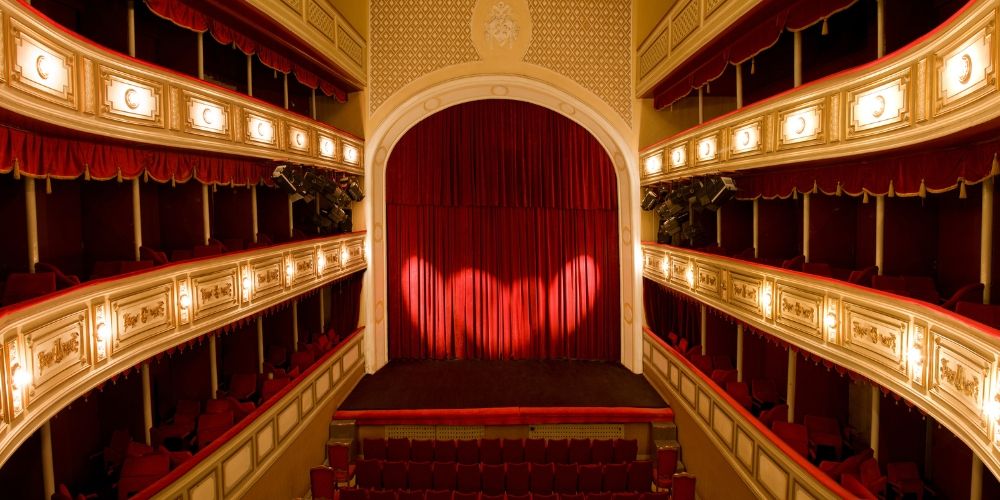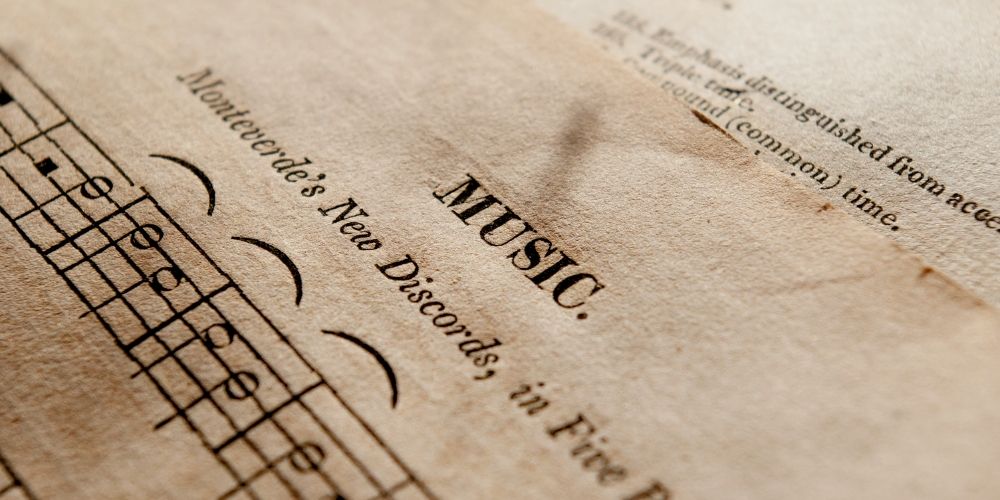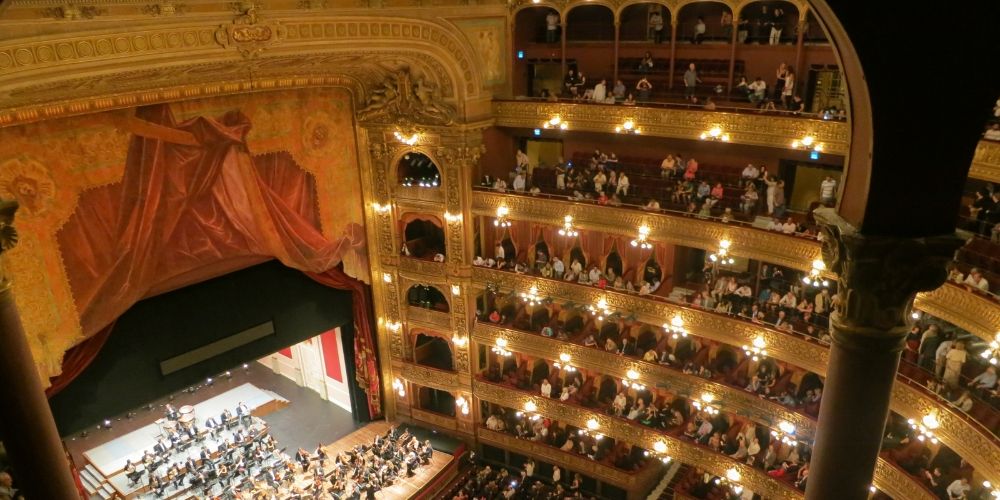Libiamo, Libiamo ne' lieti calici... it is indeed the case to celebrate with a toast this important new success for Italy: The Art of the Italian Opera Singing has entered the UNESCO Intangible World Heritage List.
The important recognition arrived on December 6, 2023 after a long journey that began in 2011 by the Ministry of Culture and the Committee for the Safeguarding of the Art of Italian Opera Singing.
As Italian Culture Minister commented: "Opera singing is a world excellence, among those that best represent us across the planet."
Italy is historically the home of Opera, "an intangible heritage that was born with "Recitar cantando" more than 400 years ago and has evolved to the present day thanks to great composers, librettists, artists, singers, musicians and teachers who have created, create and will create masterpieces."
Opera Lirica, Melodramma, Recitar cantando and Belcanto are all terms that stand for a genre that was born and developed in Italy, which because of this has the largest number of Opera houses in the world and is universally considered the home of Opera.
And Opera is the Italian term used around the world for a theatrical genre in which acting, music and singing come together.
Book your visit to La Scala di Milano here!
Why the Art of the Italian Opera Singing is Intangible UNESCO Heritage

Italian Opera Singing is Intangible UNESCO Heritage
The Art of Italian Opera Singing has officially become an Intangible Cultural Heritage of Humanity because it fully meets UNESCO's definition of "intangible property," namely, "the totality of traditions, oral expressions, performing arts, [...] which are living expressions of the identity of the community and of the peoples who recognize themselves in them."
According to The criteria established by UNESCO, The Art of Italian Opera Singing represents a masterpiece of human creative genius and is a unique testimony to a cultural tradition directly associated with artistic works of universal value.
According to UNESCO's definition, The Art of Italian Opera Singing in Italy combines the music, singing, acting and scenery typical of Opera and has the particularity of uniting in itself typically Italian tangible and intangible heritages and representing the cultural identity of our country in one of its highest expressions: the sung text, the skills and techniques that aim to enhance the human voice and facial and gestural mimicry give life to a tradition with peculiar traits that only Our Country possesses; not least the birth of the Teatro all'Italiana (Italian-style theater)around the Art of Opera Singing.
Opera singing: a short history

Opera singing: a short history
The origins of Opera date back to the period between the late 1500s and early 1600s and were due to a group of intellectuals and artists known as the Camerata Fiorentina who met in Florence at the home of Count De' Bardi. Their idea was to combine music, dance, poetry, theater and painting into a unique art form and to create a new type of entertainment similar to Greek tragedy, Melodrama.
In 1589, on the occasion of the marriage between Ferdinando de' Medici and Christina of Lorraine, the Medici family commissioned the Camerata de' Bardi to write what is considered the first Opera in history, Gli intermezzi della Pellegrina, a theatrical and musical work to be performed in the large private theater located inside the Uffizi Palace.
This was the origin of the first operas, which at first were performed in the palaces of royal and aristocratic families at special events, such as coronations, weddings, and festivals, and were reserved for a small audience.
It was not until 1637 that opera became popular when the San Cassiano, the first public theater, was opened in Venice.
In the seventeenth century, composer Claudio Monteverdi was credited with creating a genre closer to what we know today as Opera.
The first successful one, still performed and appreciated today, was "L'Orfeo" of 1609 based on the classical legend of Orpheus and Eurydice. Right from the start, this art form, aroused great interest quickly becoming the most beloved music of its time.
Melodrama reached the height of its splendor in the 19th century and dominated the musical and cultural scene by composers such as Gioachino Rossini, Vincenzo Bellini, Gaetano Donizetti, Giuseppe Verdi and Giacomo Puccini, whose operas are part of the great Italian opera tradition and beyond and are still performed with enormous success in theaters all over the world.
From the end of the 19th century, a new type of melodrama emerged in which the traditional structures of Italian opera were enriched with new content.
The most important composer of this period is Giacomo Puccini with whom Italian melodrama takes on an international and European dimension.
Opera begins, thus, to spread in Italy and throughout Europe.
The Italian term Opera will enter the vocabulary of many languages, as will many words in musical terminology: adagio, allegretto, piano, crescendo and many others.
Opera singing: the origin of the Teatro all'Italiana

Between 1600 and 1700, with the spread of Opera, the Teatro all'Italiana (Italian-style theater) was born.
The oldest in Italy and Europe is the Real Teatro di San Carlo in Naples, followed by Teatro alla Scala in Milan and Teatro la Fenice in Venice, and then Rome, Florence, Turin and Parma...
The traditional opera house is shaped like a horseshoe and embraces the stalls and stage. All around there are orders and the orders are divided into boxes each of which can seat 4 or 5 people.
Since the second half of the 19th century, opera houses have been equipped with the orchestra pit, one level below the audience.
Originally the audience was divided according to social class: the wealthy owned the boxes facing the stage and the auditorium, while the less affluent attended the performance standing in the hall that would later become the stalls.
The theater was also an important gathering place, where spectators could meet to chat, eat, gamble--both in the boxes and in the foyer and in the ridotti.
Of great importance is the backstage area, that is, all the rooms devoted to the workers and the construction of the show: the rehearsal room, dressing rooms, tailor's shops, and the hair and makeup room. Also inside the theater are the production offices, administrative offices, and all the services and personnel who, behind the scenes, work to keep the Great Theater Machine running.
Book your guided tour of the Teatro la Fenice in Venice now!The Art of Italian Opera Singing: our Playlist
If you are planning your trip to Italy, be sure to visit one of the many traditional theaters scattered throughout the peninsula.
In addition to the most famous ones, in many Italian cities you can find authentic hidden gems, rich in frescoes, decorations and atmospheric lighting.
While waiting for the curtain to open, we invite you to enjoy the most famous arias from Italian Operas with the playlist we at Visit Italy have selected for you.
Enjoy the show!
About the author
Written on 18/01/2024



Mariateresa Bonanotte
Who has not hummed the famous arias from Aida, Il Barbiere di Siviglia, Traviata at least once? Italian opera singing is a UNESCO heritage.